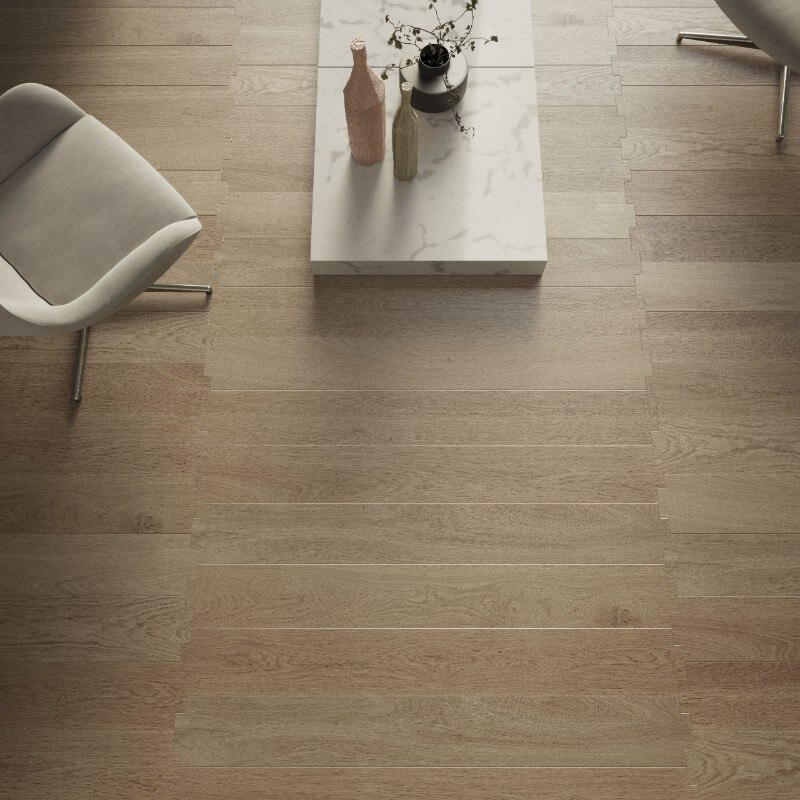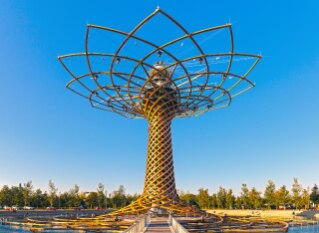The architecture aims to present these institutions with a softer, more human and approachable profile. Tall buildings are generally associated with mid-twentieth century modernism. Their harsh, businesslike exteriors contain powerful, inaccessible-seeming strongholds. By contrast, the DUO and Tax offices deliberately cloak a commanding public institution in an organic, friendlier and more future-oriented form.
"We paid a great deal of attention to how people would move through the building," says principal Ben van Berkel. "The office spaces are designed in such a way that they do not create simple linear corridors leading to dead ends, but instead each corridor has a route which introduces a kind of landscape into the building. You can take endless walks through the building, where there is a great deal of transparency, also towards the surrounding landscape."
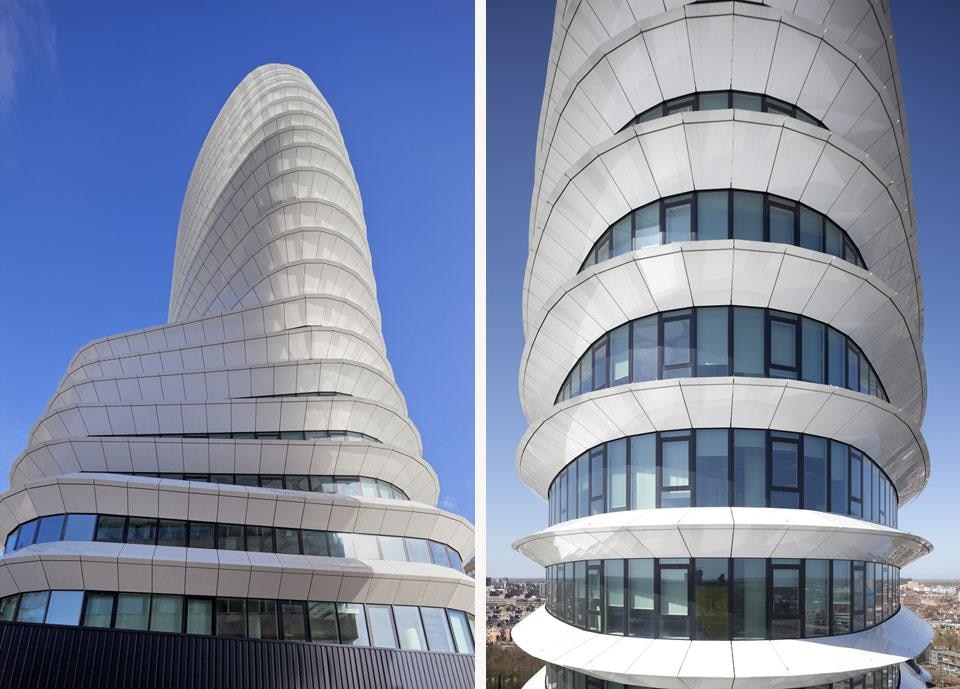
The life-cycle approach of a DBFMO contract requires that all relevant experts (designers, lawyers, installation specialists, financial specialists, facility specialists) are involved from the start of the project in order to find the best, most cost effective and environmentally-friendly solutions for the continued use and maintenance of the building. This working methodology stimulates not only creative and innovative ideas, but facilitates a reduction of total costs over the entire contract period compared to the traditional means of contracting. In PPP projects contracts are not awarded to the lowest bidder, but to the party with most effective solutions providing the best value for money.
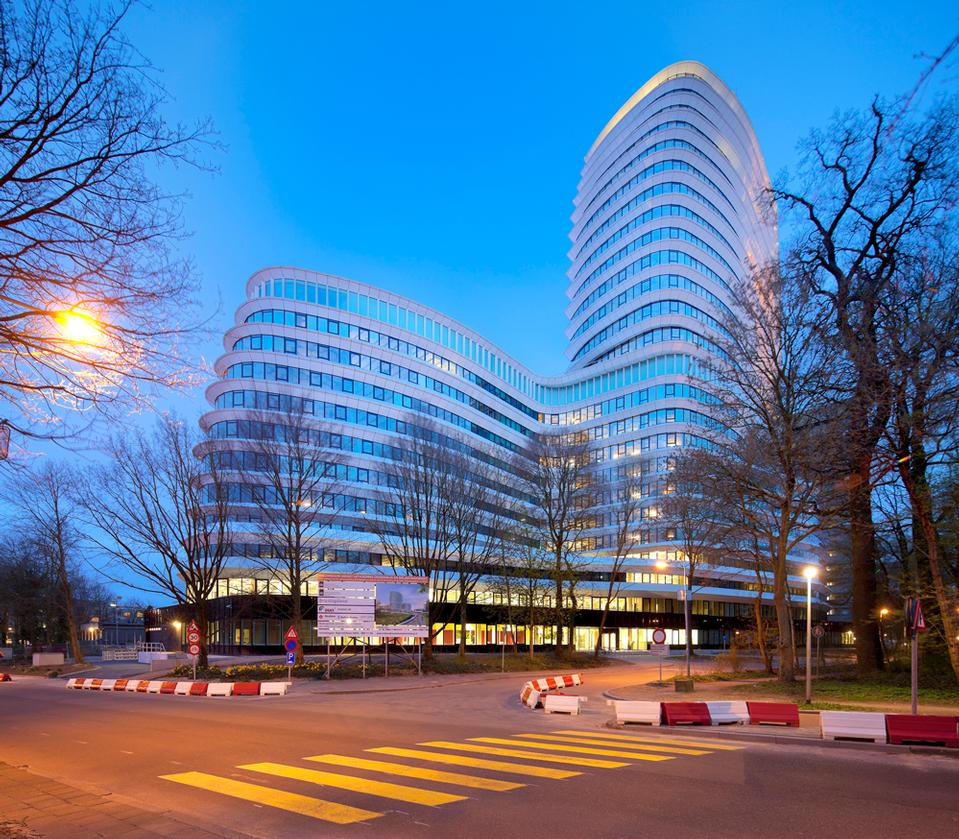
The project is one of Europe's most sustainable large new office buildings. The RGD brief prescribed a future-proof building that couples flexibility and sustainability with an esthetic of sobriety. The architectural response to this has been to strive for an all-round understanding of the concept of sustainability, including energy and material consumption, as well as social and environmental factors. Thus the sustainability manifests itself in reduced energy consumption (EPC 0.74), as well as significantly reduced material consumption. Bringing back the floor heights from 3.60 m to 3,30 m resulted in a total reduction of 7.5 m on the entire building, which also lessens the impact of the building on the surroundings. Both inside and outside the architecture generates a bio-climate that is beneficial to both humans and the local flora and fauna.
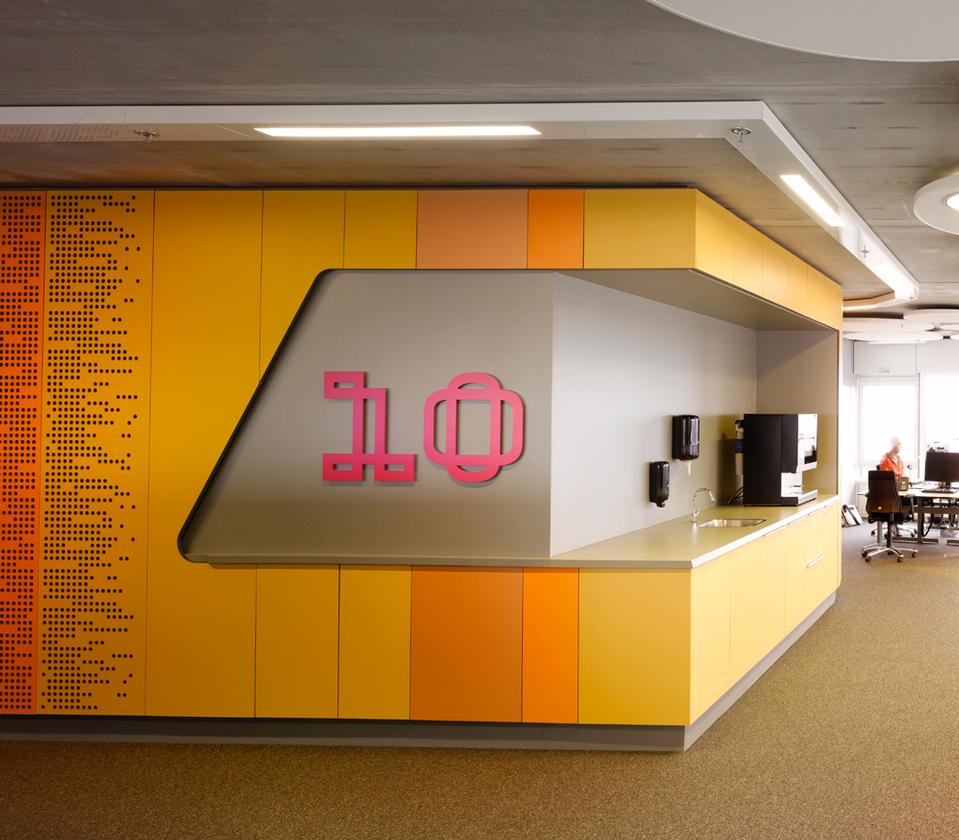
Construction: 2006–2011
Client: Dutch Government Buildings Agency (RGD)
Client UNStudio: Consortium DUO² (Strukton, Ballast Nedam, John Laing)
Program: Office building (phase A); underground parking (phase B); public city garden, pavilion (phase C)
Building surface: 48.040m² offices, 21.000m² parking, 1.500m² pavilion
Building volume: 215.000m³
Building site: 31.134m²
Credits UNStudio: Ben van Berkel, Caroline Bos, Gerard Loozekoot with Jacques van Wijk, Frans van Vuure, Lars Nixdorff and Jesca de Vries, Ramon van der Heijden, Alicja Mielcarek, Eric den Eerzamen, Wendy van der Knijff, Machiel Wafelbakker, Timothy Mitanidis, Maud van Hees, Pablo Herrera Paskevicius, Martijn Prins, Natalie Balini, Peter Moerland, Arjan van der Bliek, Alexander Hugo, Gary Freedman, Jack Chen, Remco de Hoog, Willi van Mulken, Yuri Werner, Machteld Kors, Leon Bloemendaal, Erwin Horstmanshof
Designteam: UNStudio, architecture and interior; Studio Linse, interior; Arup, structure, installations; Lodewijk Baljon, landscaping; Buro van Baar, wayfinding; YNNO, internal logistics
Consultants: DGMR, acoustics; EFPC, fire prevention; Ingenieursbureau Wassenaar, prefab structure; BTS Bouwkundig Tekenburo Sneek, drawing agency; ISS Nederland B.V, maintenance; Peutz, environmental technology; WUR (Wageningen University & Research centre), ecology; Strukton Bouw en Vastgoed, management and costing; Strukton Betonbouw, construction; Strukton WorkSphere, installations
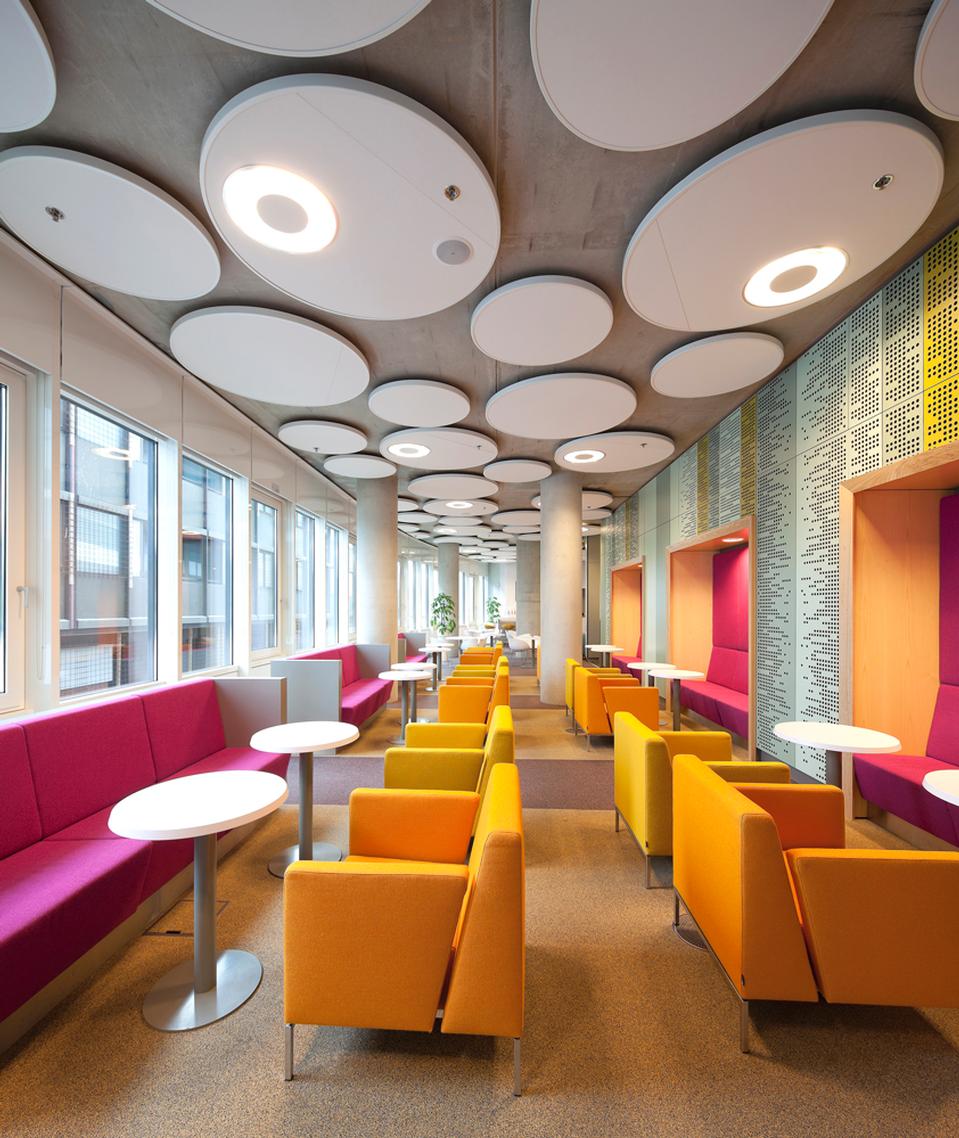
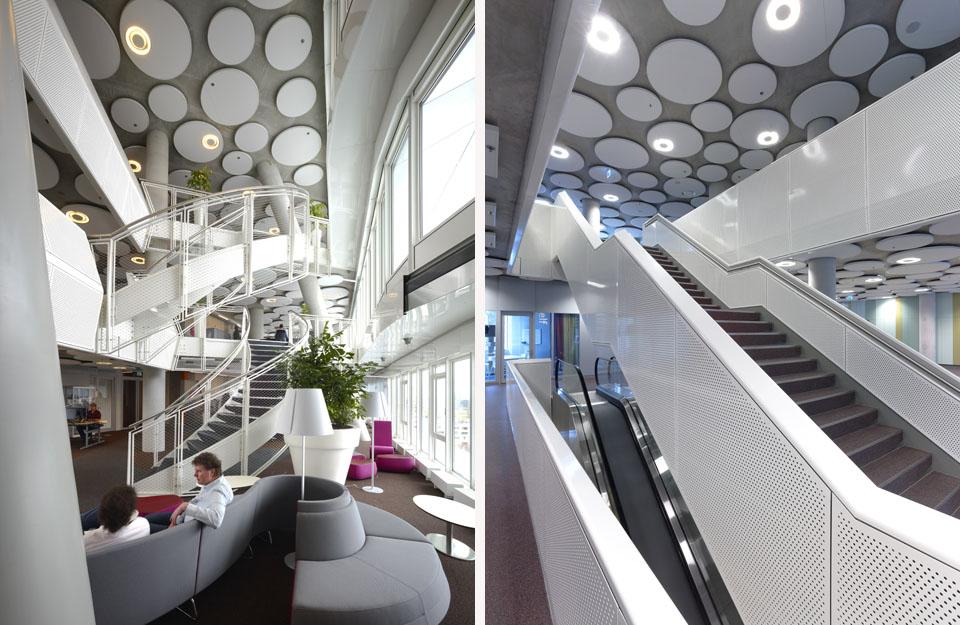
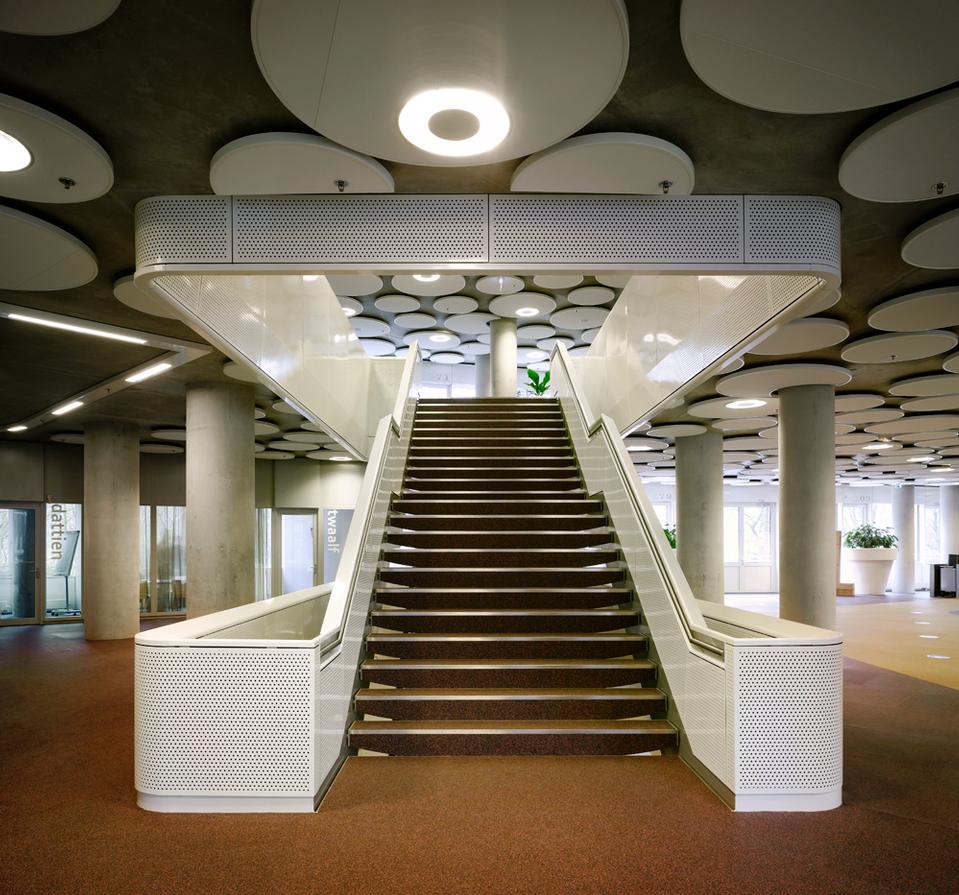


INQUADRA: DeFAVERI's seamless energy efficiency
INQUADRA is DeFAVERI's flush-mounted monoblock that cancels thermal bridges for maximum energy efficiency and a minimalist design. Easy to install and customize, it marks one of the innovations from a long-established company, now part of the ECLISSE Group.



